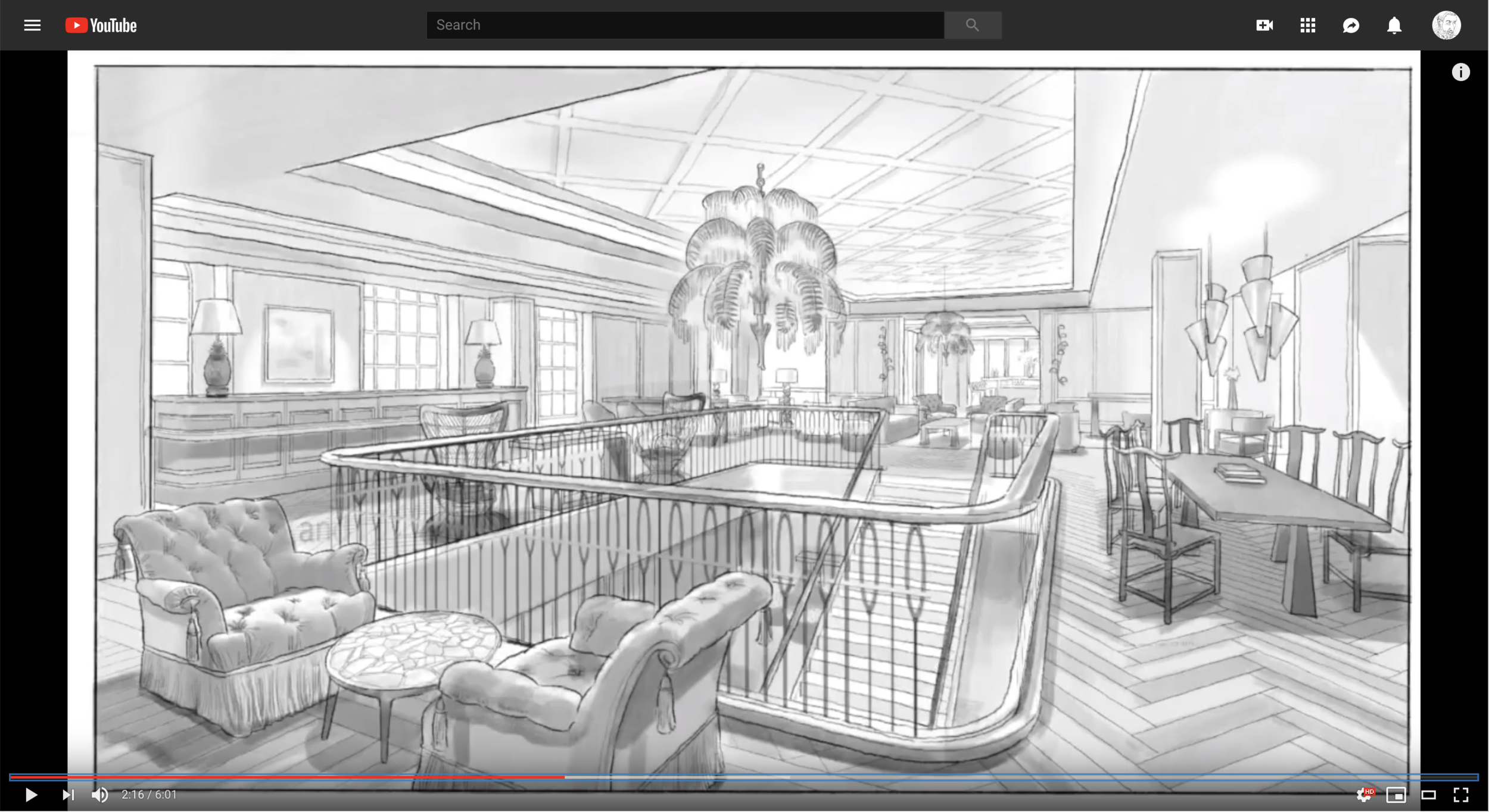In today's masterclass, I show you how designing with sketches can give your ideas the time and attention they need to grow, bringing your client into the creative process, as opposed to shutting them out with the false promise of half-baked photorealistic concept designs.
Procreate, Architecture & Design: Sketching As Part of the Design and Presentation Process
Procreate Painting and Drawing Techniques for Architects and Designers
Have Pen Will Travel: Benefits To Architects of In-House 3rd Party Sketching and Rendering
Using Sketchup and Procreate to Simultaneously Design and Render 5 Hotel Interiors
How Architects and Interior Designers Can Design Using Procreate on the iPad Pro
3 Cartoons Explaining How Cats Took Over My Parents' Lives
Against All Odds, Architectural Rendering By Hand is Back
Ever-shrinking architects’ fees combined with developer’s expectations of Hollywood-quality digital renderings have brought us full circle: hand rendering is being rediscovered as the most cost effective and artistically direct way to do concept design in the digital age, with the added benefit of helping to art-direct third party digital rendering consultants.
Storyboards For Startups
Architectural Rendering Technique: The Art Of The Pen and Ink Sketch
Product Design Sketching Techniques: Using Photoshop to Recreate Blueprint "Feel"
Architectural Presentation Techniques: The Art of the Digital Sketch
In yesterday's post about loose architectural sketches, we talked about traditional pencil and pen-and-ink sketches. Today we'll talk about what I call a loose digital sketch. The loose digital sketch begins with a loose manual sketch composing the view and identifyling the important elements in the proposed design.
But then the loose digital sketch takes a turn to photoshop.

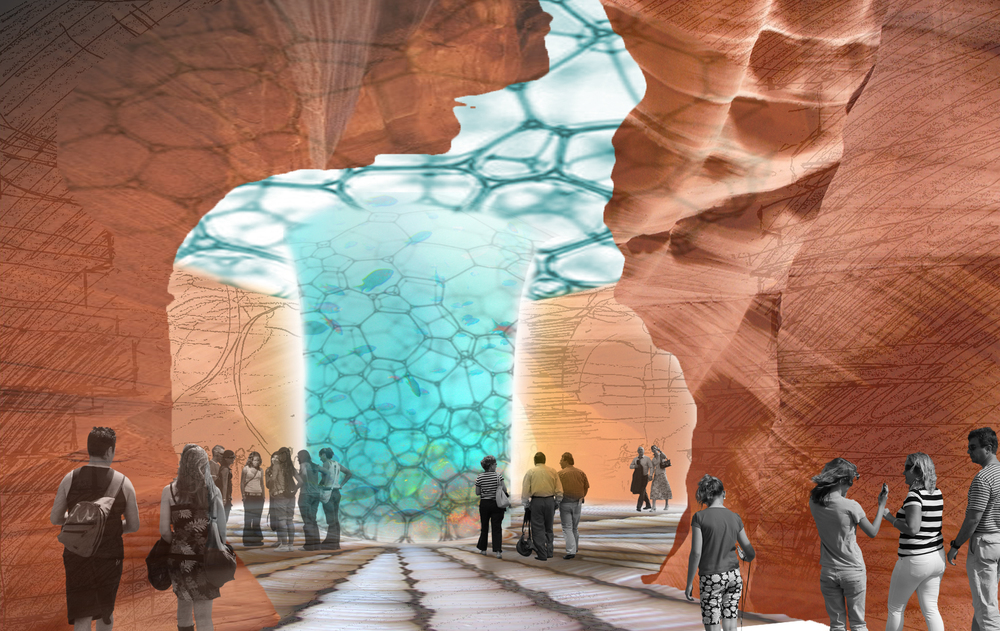
Working closely with the designer, the architectural renderer...
Architectural Rendering Technique: The Art Of The Loose Sketch
Even in this digital design age, there is a place for the loose architectural rendering. It is fast where other architectural rendering techniques are slow. It is non-commital, where digital rendering has to be precise in order to look good. It's also not a bad metaphor for life. What do I mean by that?
 Loose architectural renderings and sketches are still one of the most important architectural rendering techniques. In this example, the author uses felt tip pen to work directly on top of the soft pencil sketch used to visualize the space and develop the design before the architect's eyes. This insures that the sketch stays loose and that one's attitude toward the rendering does not become too precious.
Loose architectural renderings and sketches are still one of the most important architectural rendering techniques. In this example, the author uses felt tip pen to work directly on top of the soft pencil sketch used to visualize the space and develop the design before the architect's eyes. This insures that the sketch stays loose and that one's attitude toward the rendering does not become too precious.
I mean, how many times in life is 75% or even 85% of the idea...
Pencil Sketching is the New Computer Aided Design
As digital modeling and architectural digital rendering continue to chnage our industry for the better, the arts of architectural rendering and architectural sketching in watercolor, pencil, and pen-and-ink become huge asstes in the constant battle to stand out among competitors all using the same digital tools.
 Architectural sketching and storyboarding in watercolor
Architectural sketching and storyboarding in watercolor
They engage clients' emotions, connecting with that deep thing that persists in all of us--that ability to...
Architectural Sketching and Rendering For The Digital Rendering Age
 Above: This architectural sketch (or what some might call an architectural rendering) in pencil shows the architect's design concept for an underground book storage addition to the Princeton University library. Visualizing the design concept in quick pencil sketches not only engaged the client in an attention-grabbing ad humanistic way, it also served as a kind of art direction to help guide the third party architectural digital renderers.
Above: This architectural sketch (or what some might call an architectural rendering) in pencil shows the architect's design concept for an underground book storage addition to the Princeton University library. Visualizing the design concept in quick pencil sketches not only engaged the client in an attention-grabbing ad humanistic way, it also served as a kind of art direction to help guide the third party architectural digital renderers.Ahh the Smell of Pen and Ink Architectural Rendering in the Morning
Pen, ink and tracing paper remains one of the effective forms of architectural rendering ever devised, but what if we combined it with photoshop and a digital aesthetic?

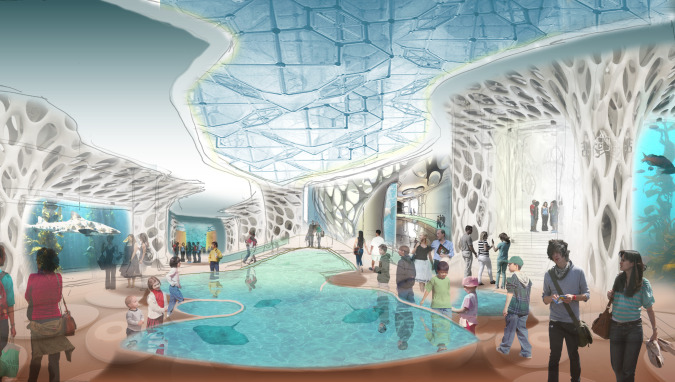
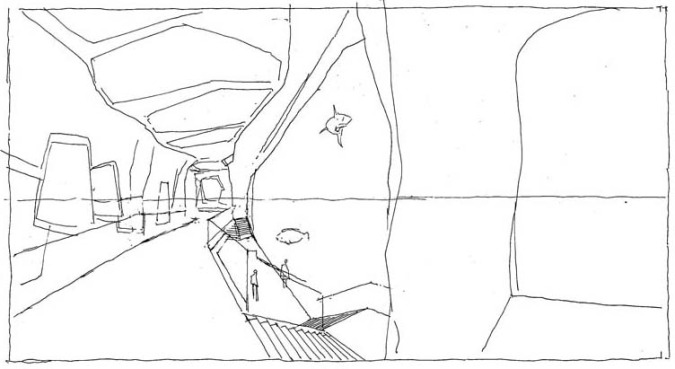
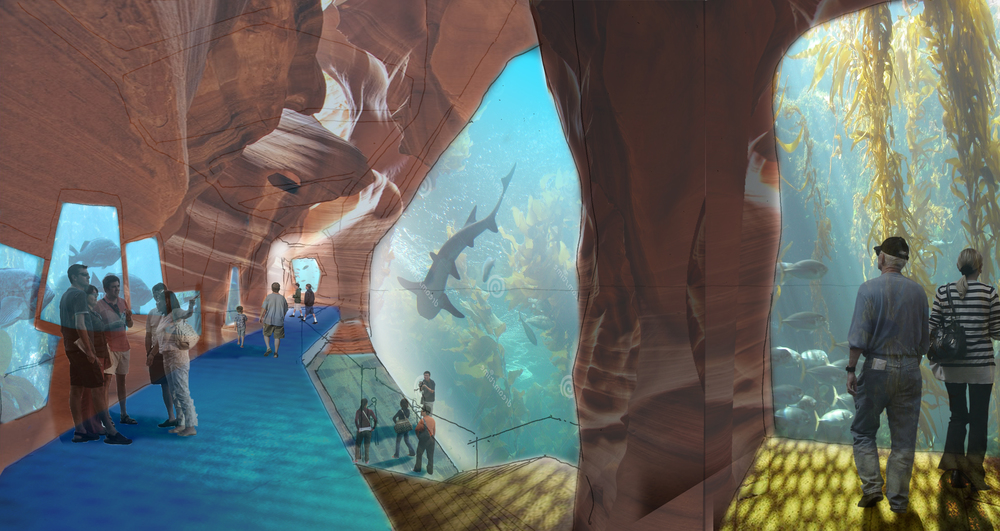
This architectural rendering project was a lot of fun, done right in the architect's office with close collaboration between architect and architectural illustrator. I would love to know what you think? Please leave coments below.
(The author is a registered architect and architectural illustrator with years of experience helping architects and interior designers develop and present their ideas in dramatic and cost-effective ways. From concept design to final presentation, we work in your office or from our NYC studio. 413-250-8800.)
A Year-End Thanks To You, Reader, And Your Picks For This Blog's Best Posts of 2015
It’s day three (or is it four? I’ve lost count) of the approaching 2015 year-end holiday season. You’re getting sick of reading the same old online sites: Huffpo, NYT, Fox News, what’s the difference? Why not take a break and read what you voted for as this blog's Best of 2015? And don't forget to join the discussion by leaving your comments!
With humble gratitude for your attention, I give you: the best of the 3-D Visualization Blog, 2013
Pitch Your Schematic Design Ideas With Digital Sketches, NOT Digital Or Traditional Architectural Renderings
Presenting schematic architectural and interior design ideas to your client in the digital age can be challenging. The problem? The photo-literalism of digital images can, if presented too early, elicit an equally literal response in your client and put the organic “Concept-to-DD-to-CD” design process at risk.

Like all technological advances, digital architectural rendering presents us with a double edged sword. On the one hand, digital software gives designers the unprecedented power to present schematic design ideas as photorealistic fait accompli. On the other hand
Use Digital Architectural Sketching To Streamline Client Approvals
It's one week before your next big design meeting. You have multiple ideas to present, but your goal is to secure your client's approval of a single direction so you can complete this phase, bill for it and move your team on to the next.

Back in the day, architects solved this problem by presenting loose architectural sketches (with maybe a little color thrown on them), blown up several feet wide so as to wow the client with vagueness...but times have changed and clients have changed with them.

Modern clients have grown up in a world of photo-realistic digital images.Their parents understood that hand drawn sketches and diagrams were a part of the design development process, but this generation has
Hybrid Architectural Renderings Mix Traditional Architectural Renderings Techniques With Photoshop
We've talked quite a bit about hybrid architectural renderings in this blog. A hybrid architectural rendering is any rendering that mixes traditional and digital techniques so as to leverage the best characteristics of both.

Traditional architectural rendering, as the argument goes, communicates at some deep level in the human brain, connecting people--even against their will, Don Draper might say--with emotions still stirred by handmade artifacts, as in a handmade drawing or painting.
Digital architectural rendering techniques, on the other hand, brings advantages no human artifact can compete with: the illusion of photo-realism; the advantages of infinite visual adjustment in very little time, and my favorite:







